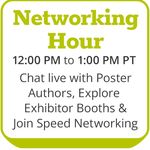Associate Professor of Cell Biology
BIOGRAPHY

JUN 06, 2023 9:00 AM PDT
Time-resolved electron microscopy: synaptic ultrastructure millisecond by millisecond with high-pressure freezing
Sponsored by: Leica Microsystems
C.E. Credits:
P.A.C.E. CE
Speakers
-
Grant Kusick
Ph.D. candidate at Johns Hopkins UniversityBIOGRAPHY
Event Date & Time
Date: June 6, 2023
Time: 9:00am (PST), 12:00pm (EST), 6:00pm (CEST)
Abstract
Transmission electron microscopy reveals the architecture of cells at nanometer resolution, but chemical fixation severely warps their native structure. The true ultrastructure of cells can be captured by fast high-pressure freezing before processing by electron microscopy. High-pressure freezing has been an enabling technology in many fields, notable among them the cell biology of synapses. Many questions in synaptic physiology remain unresolved because the millisecond-scale speed of neurotransmission and nanometer-scale structure of the synapse has made it difficult to visualize ultrastructural changes during neurotransmission. High-pressure freezing can be combined with optogenetics (‘flash-and-freeze’) or electrical field stimulation (‘zap-and-freeze’) to close this gap. In these methods, neurons are stimulated then frozen at defined time points down to the millisecond by high-pressure freezing, and processed and imaged by transmission electron microscopy. This system can be used for single action potentials or more complex stimulation protocols to capture structural changes during synaptic plasticity, and in dissociated neurons or specific circuits in intact tissue. This approach already been used to discover and interrogate the molecular mechanisms of novel synaptic phenomena, such as ultrafast endocytosis and ‘transient docking’, a movement of synaptic vesicles that may underly short-term plasticity. Further use of high-pressure freezing and time-resolved electron microscopy will lead to more such discoveries.
Learning Objectives
- Recognize how high-pressure freezing preserves synapses in their near-native state for electron microscopy
- Identify problems in cellular neurobiology that can be addressed by combining high-pressure freezing with electrical stimulation (‘zap-and-freeze’)
- Explain what features, such as docking and exocytosis, can be directly quantified using zap-and-freeze
- Discuss a new synaptic process, transient docking, that was discovered using zap-and-freeze
Webinars will be available for unlimited on-demand viewing after live event.
LabRoots is approved as a provider of continuing education programs in the clinical laboratory sciences by the ASCLS P.A.C.E. ® Program. By attending this webinar, you can earn 1 Continuing Education credit once you have viewed the webinar in its entirety.
You May Also Like
DEC 10, 2024 | 9:00 AM
To-date, proteomic analysis has been severely limited in scale and resolution. Analyzing protein samples using an intact, single-molecule approach holds th...
APR 21, 2025 | 1:00 PM
C.E. CREDITS
Routine coagulation assays are widely performed in laboratories and provide valuable information to the patient’s overall clinical picture. It’s important for laboratorians to kn...
Speaker:
Malissa S Norfolk, MBA, PMP, MLS(ASCP)ᶜᵐSHᶜᵐ
FEB 25, 2025 | 1:00 PM
C.E. CREDITS
Quality efforts in the clinical laboratory are always under the microscope- a hyper-focus for laboratorians from start to finish. Recognizing the external factors that affect hemostasis test...
Speaker:
Rae Kerlin, BS, MLS (ASCP), NCA
APR 02, 2025 | 11:00 AM
Join this year's poster presenters in the Poster Hall during the Poster Networking Hour, Wednesday, September 20th, from 10:00 AM –11:00 AM PDT , to chat live about their posters a...
Speaker:
Join Us for Networking Opportunities!
Presented at: Bioprocessing Virtual Event Series 2025
Loading Comments...
Please update your information
Certificate of Attendance
Thank you for choosing Labroots. Please note that a Certificate of Attendance does NOT count towards Continuing Education Credits.
DOWNLOAD CERTIFICATE
DOWNLOAD CERTIFICATE
You must watch the entire webinar to receive your certificate of attendance.
You must attend the event before receiving your certificate of attendance.
You must register for the event first.
Certificate is no longer available for this event.
You must be logged in to retrieve your certificate.





